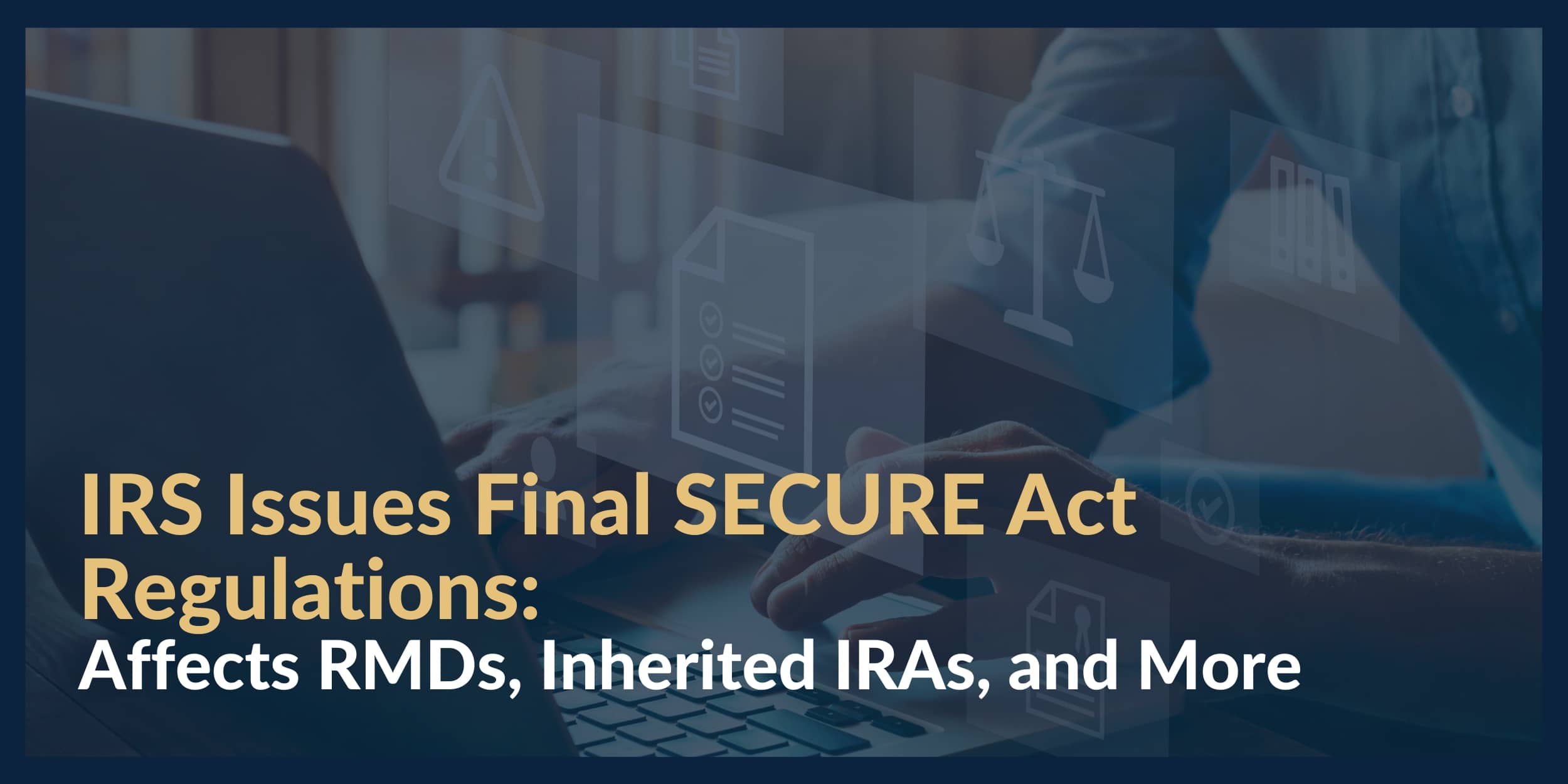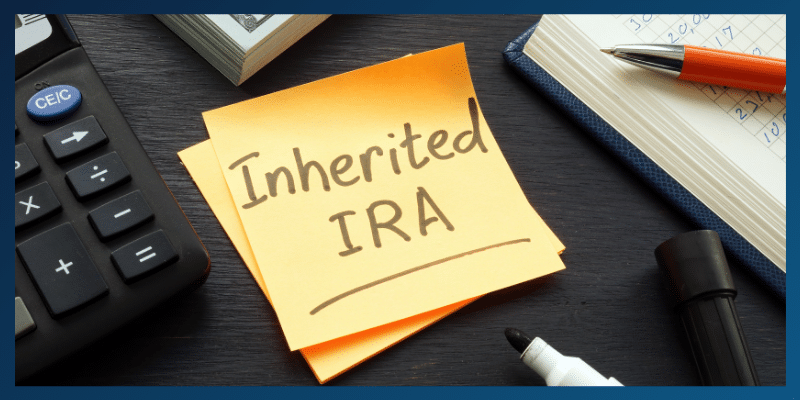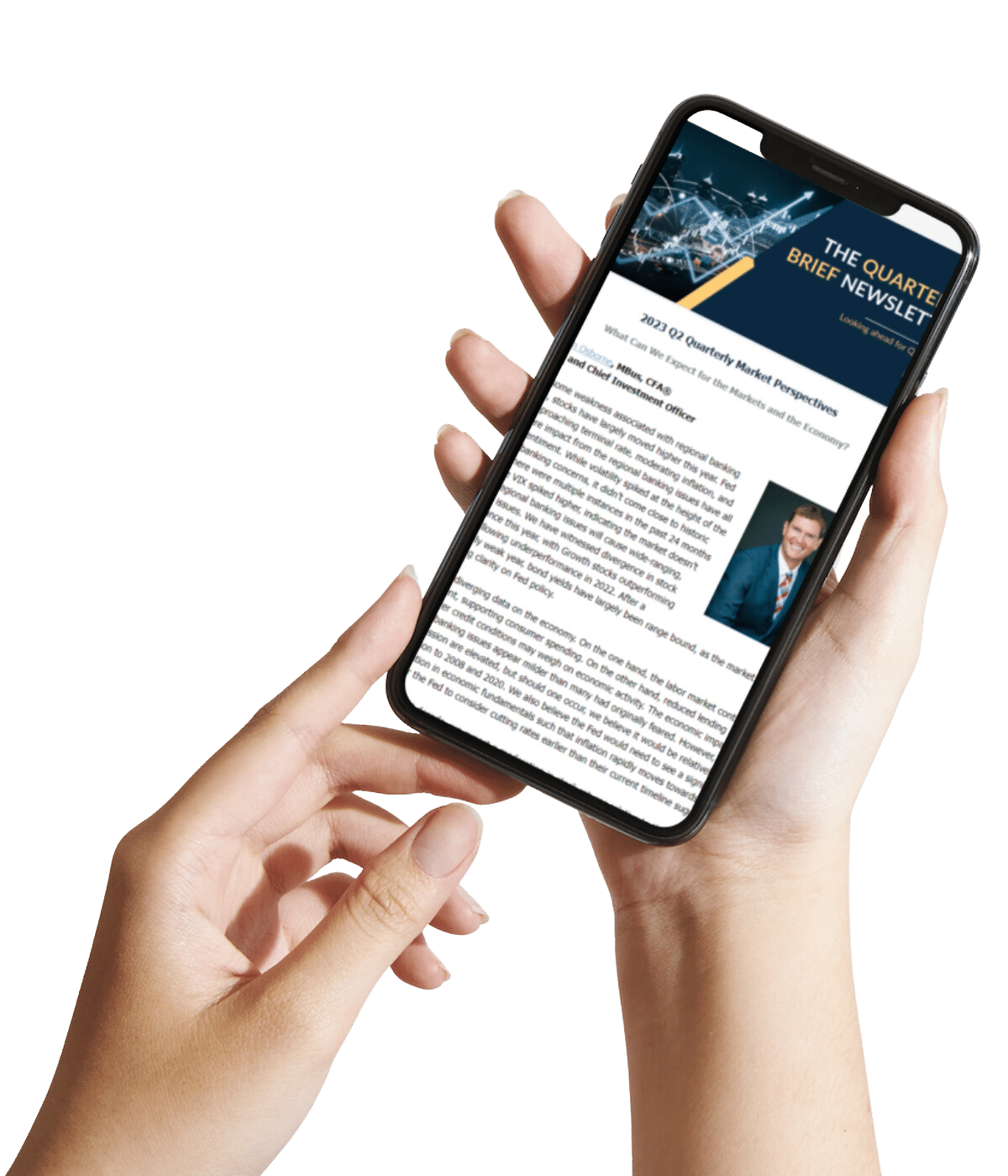
On July 18, 2024, the IRS issued final RMD regulations under the SECURE Act and the SECURE 2.0 Act. The Final Regulations contain 260 pages of complex content for advisors to understand; this article will review some of the more important provisions.
If this were not enough, the IRS also saw fit to release 36 more pages of new Proposed Regulations relating to SECURE 2.0 and retirement accounts. Thankfully, these new rules don’t look nearly as impactful for retirees and beneficiaries as those in the Finalized Regulations.
Important Provisions of the Finalized Regulations
1.Existing Requirement for Annual RMDs During the SECURE Act’s 10-Year Payout Period
When the SECURE Act became law in 2020, most non-spouse beneficiaries lost the ability to stretch payments over their life expectancy. Instead, these beneficiaries became subject to a 10-year payout rule. The IRS proposed that if the account holder died on or after their required beginning date for taking RMDs, then annual RMD payments must continue to the beneficiary during the 10-year period. The IRS based its interpretation on a long-standing provision known as the “at least as rapidly rule” (ALAR), which requires annual RMDs to continue once they have started.
The IRS waived RMDs during the 10-year period for beneficiaries in 2021, 2022, 2023, and 2024 due to confusion. However, the newly released final regulations reaffirm that annual RMDs are required starting in 2025, and penalties will not be imposed for missed RMDs before 2025. While this requirement has been criticized, many beneficiaries voluntarily take more than the minimum distribution, making this rule irrelevant to them. Those who don’t should consider doing so to avoid a large tax bill in the 10th year.
2. Older Beneficiaries Are No Longer Penalized
Previously, eligible designated beneficiaries must take annual RMDs over the longer of the beneficiary’s single life expectancy or the remaining single life expectancy of the decedent. However, the proposed regulations penalized beneficiaries older than the decedent by requiring such a beneficiary to fully distribute the account when the beneficiary’s life expectancy ends. The final regulations removed this requirement, which means that a beneficiary who is older than the participant may take distributions over the full life expectancy of the participant.
3. Handling Undistributed RMDs in the Year of an Account Owner’s Death
The Final Regulations clarify that an individual’s undistributed year-of-death RMD can be satisfied by multiple beneficiaries in any manner they choose rather than being split in proportion to their share of the inherited retirement account.
To the extent there is more than one beneficiary of a retirement account, beneficiaries can take the decedent’s remaining year-of-death RMD in any manner they so choose (as long as the total amount distributed by all of them is equal to or greater than the decedent’s remaining RMD amount).
What happens if an IRA owner has different beneficiaries for their different IRA accounts? The Final Regulations provide a complex answer to this question, which is rife with potential complications. In short, the decedent’s remaining RMD must be taken proportionately from each of the decedent’s inherited IRAs.
4. Automatic Waiver of Penalties for Year-of-Death RMD Shortfalls
Previously, the IRS granted an automatic waiver to take missed year-of-death RMDs. The deadline for taking missed year-of-death RMDs has been extended to December 31 of the year after death.
5. Eligible Designated Beneficiaries (EDB) Distribution Options
EDBs can choose between the “Stretch” rules or the 10-Year Rule, but plans can restrict options and have different rules for different categories of EDBs.
For example, a plan can allow a surviving spouse to choose between the Stretch or the 10-Year Rule while requiring all other EDBs to use the 10-Year Rule. These rules could be important when deciding whether to roll funds to another plan or IRA.
6. RMDs and Designated Roth Accounts
One of the more interesting provisions to make its first appearance in the Final Regulations is a rule that says if a plan participant’s “entire interest” in the plan is in a Designated Roth Account, they will be deemed to have died before their Required Beginning Date. Hence, to the extent that a plan participant has all their plan balance in a Designated Roth Account, their non-EDBs will not be required to take any distributions during years 1-9 after their death, allowing for the inherited Roth account to continue compounding as much as possible for 10 years. This provision only applies if the ENTIRE plan balance is in a Designated Roth Account.
7. New Definitions for Beneficiaries of a See-Through Trust
The regulations clarify which trust beneficiaries are treated as retirement account beneficiaries and how distributions should be handled for Conduit Trusts and Accumulation Trusts.
The original Proposed Regulations and the new Final Regulations are built on existing rules concerning which trust beneficiaries are also treated as retirement account beneficiaries (or are instead disregarded from being treated as retirement account beneficiaries). This distinction matters because it can dictate whether the trust is considered a See-Through Trust (which allows the beneficiaries, rather than the trust itself, to be treated as the beneficiaries of the decedent’s retirement account when the trust is named as the beneficiary of a retirement account).
In a Conduit Trust, where all distributions from the retirement account must be immediately distributed to one or more trust beneficiaries, only the trust beneficiary initially designated to receive distributions is treated as a retirement account beneficiary. All other trust beneficiaries are disregarded when determining the retirement account’s post-death distribution schedule.
In an Accumulation Trust, in which distributions from the retirement account are allowed to accumulate within the trust, both “Primary Beneficiaries” (who can receive retirement account proceeds within the trust without that access being contingent on the death of another beneficiary) and “Residual Beneficiaries” (who could receive undistributed retirement account proceeds after the death of a Primary Beneficiary) are treated as beneficiaries of the retirement account. This rule has two exceptions.
The Final Regulations clarify two items:
- The IRS specifies that if a residual beneficiary has ANY access to accumulated retirement account distributions in the trust during the lifetime of a Primary Beneficiary, even if that access is restricted, they will be treated as a retirement account beneficiary.
- The Final Regulations clarify that payments “for the benefit of” a trust beneficiary are treated as direct payments to the beneficiary. For example, trust distributions that go to a custodial account for the benefit of a minor beneficiary rather than to the beneficiary themselves are treated as if they were paid directly to the beneficiary
8. New RMD Rules for Separate Trusts
An important new feature in the Final Regulations pertains to trusts that provide for themselves to be divided into separate trusts for each of their multiple beneficiaries immediately upon the retirement account owner’s death. For these trusts, the RMD rules will be applied to each individual trust beneficiary according to their status as an Eligible or Non-Eligible Designated Beneficiary, not, as the current regulations require, to all beneficiaries uniformly according to the beneficiary with the shortest withdrawal schedule.
Consult a Financial Advisor
Alongside the final regulations, the IRS released new Proposed Regulations addressing unanswered questions around the SECURE 2.0 Act, notably confirming that the RMD age for individuals born in 1959 is 73.
Understanding these changes is crucial for effective retirement planning. Consult your financial advisor to navigate these regulations and optimize your retirement strategy.

Mission Wealth Can Help You Retire with Confidence
This may be your first time retiring, but it's not ours. Careful coordination is required to ensure your retirement income strategy is tax-efficient and sustainable. You will face many decisions when retiring. Let us guide you through your options and create a plan.
Mission Wealth’s vision is to provide caring advice that empowers families to achieve their life dreams. Our founders were pioneers in the industry when they embraced the client-first principles of objective advice, comprehensive financial planning, coordination with other professional advisors, and proactive service. We are fiduciaries, and our holistic planning process provides clarity and confidence. For more information on Mission Wealth, please visit missionwealth.com.
To meet with a Mission Wealth financial advisor, contact us today at (805) 882-2360.
Let's Keep in Touch!
Subscribe for exclusive content and timely tips to empower you on your financial journey. Our communications go straight into your inbox, so you'll never miss out on expert advice that can positively impact your life.Recent Retirement Articles

6 Financial Steps to Take if You’ve Been Impacted by a Corporate Layoff
September 4, 2025
Holding On to These Moments: Allyn’s Retirement Story
August 27, 2025


